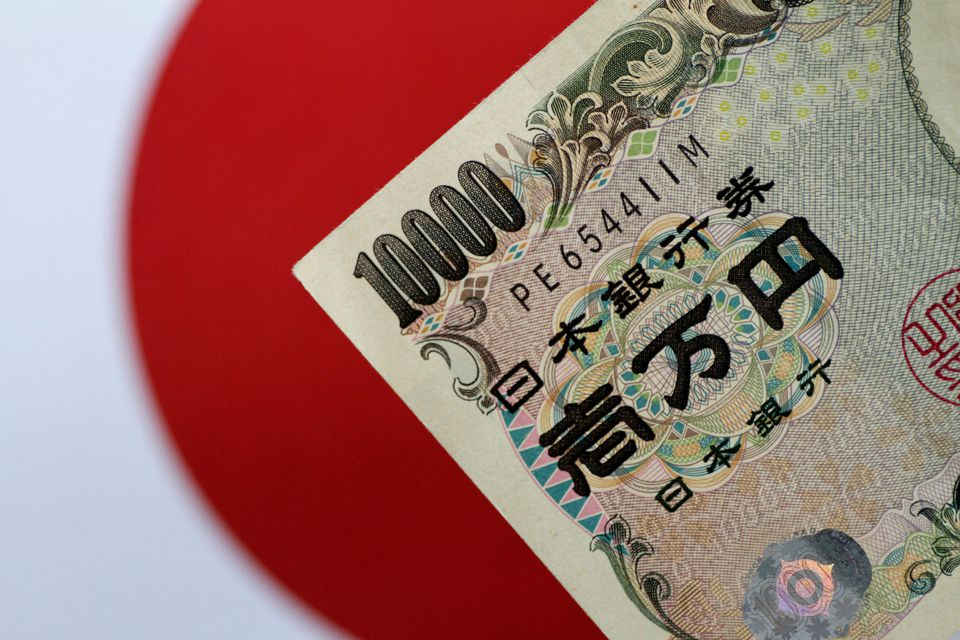Yen hits 34-year low, authorities say ready to intervene at any time
After the inflation data released by the United States exceeded expectations and rose, the yen broke through the important barrier of 152 on Wednesday, hitting 153.24 for the first time since June 1990.
In recent weeks, the exchange rate of the Japanese yen against the US dollar has been hovering around the 152 important level. However, after the US released inflation data that exceeded expectations and rose, the yen broke through this level directly on Wednesday, hitting 153.24 for the first time since June 1990.
US CPI data 'spooks' yen rate
According to official data from the United States, the Consumer Price Index (CPI) rose 0.4% month on month and 3.5% year-on-year in March, while the market expects a 0.3% month on month and 3.4% year-on-year increase. Excluding volatile food and energy components, core inflation in the United States increased by 0.4% month on month in March, with an expected growth rate of 0.3%, an annual growth rate of 3.8%, and an expected growth rate of 3.7%.
According to CME's FedWatch tool, after the release of CPI data, traders significantly reduced their bets on the Federal Reserve's June rate cut from 57% on Tuesday night to 17%. And based on interest rate futures prices, they now believe that the likelihood of a rate cut at the September meeting is 66%.
The Federal Reserve's fund futures have also reduced the number of interest rate cuts of 25 basis points (bps) this year from about three to four a few weeks ago to less than two, to about 44 basis points.
After the release of US CPI data, the Japanese yen showed significant fluctuations. The USD/JPY exchange rate rose 0.93% to 153.15 yen from late Tuesday, touching a 34 year low of 153.24 yen.
In addition, the yield of Japan's 10-year sovereign bonds also followed the pace of US treasury bond bonds, rising by 6 basis points to 0.855%, reaching the highest level since last November.
For weeks, traders have been wary of possible intervention by Japanese authorities, as even Japan's historic exit from negative interest rates has failed to boost the yen exchange rate. After the US dollar hit a new low against the Japanese yen, the market will remain highly concerned about the actions of the Japanese government.

Japanese government says ready to interveneat any time
In 2022, the exchange rate between the US dollar and the Japanese yen fell to nearly 152. As a result, Japan intervened in the market three times, selling over 60 billion US dollars to buy the yen in order to stabilize the yen exchange rate. Later, the market generally believed that 152 was an important psychological barrier for the Japanese authorities.
On Thursday, the Japanese Finance Minister responded by stating that there were no options to deal with excessive fluctuations in the yen exchange rate, and warned that the Japanese government is ready to intervene in the face of the recent sharp decline in the yen exchange rate. He also stated that the Japanese authorities are not only concerned about the exchange rate level, but also about the background. It is very important for the currency market to stabilize and fluctuate based on fundamentals.
"Now (Japanese authorities) may intervene at any time. Considering the level of the yen, it is not surprising that officials will intervene tomorrow." Takeshi Minami, Chief Economist at Norinchikin Research Institute, believes that "the yen's trend is driven by market bets on the Federal Reserve's interest rate cut, so Japan's actions alone may not change the rules of the game."
Masafumi Yamamoto, Chief Foreign Exchange Strategist at Mizuho Securities, believes that compared to Japan's intervention in 2022, the Japanese authorities seem to lack the determination to defend the yen this time. "Given that the strengthening of the US dollar reflects the stability of the US economy and the large interest rate difference between Japan and the US, the Japanese authorities may feel that even intervention now would be of no use."
For many years, the Japanese yen has been under pressure due to rising interest rates in the United States and staying near zero in Japan, which has led many people to convert cash from the yen to the US dollar to earn so-called "interest rate spreads".
According to JPY futures data from the US Commodity Futures Trading Commission (CFTC), as of the week ending April 2, non commercial short positions have climbed to 143,230 contracts, the highest level since December 2013.
Adam Button, Chief Monetary Analyst at FOREXLIVE, believes that there is a 30% chance that Japan will intervene this month. Because the rapidly declining trend now seems to be a bad timingButton said, "Japan does not want the yen to weaken further, but this is the fundamental trend of the US dollar's overall strength. I think Japan has no reason to oppose this trend at the moment."
·Original
Disclaimer: The views in this article are from the original Creator and do not represent the views or position of Hawk Insight. The content of the article is for reference, communication and learning only, and does not constitute investment advice. If it involves copyright issues, please contact us for deletion.